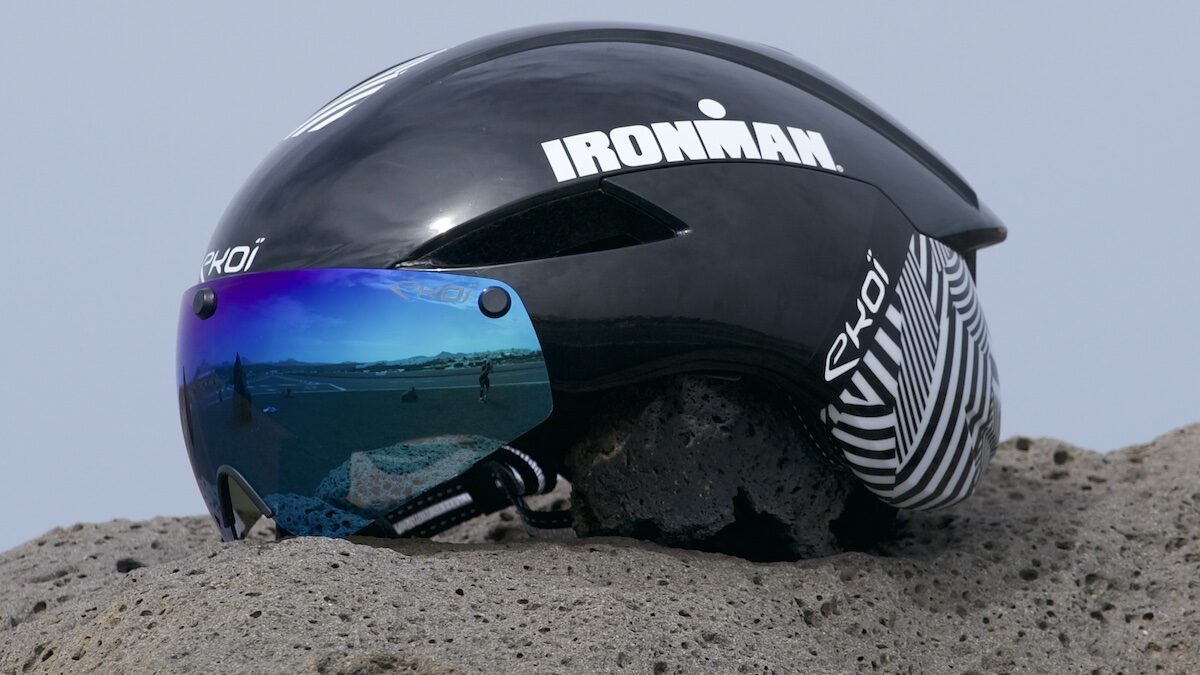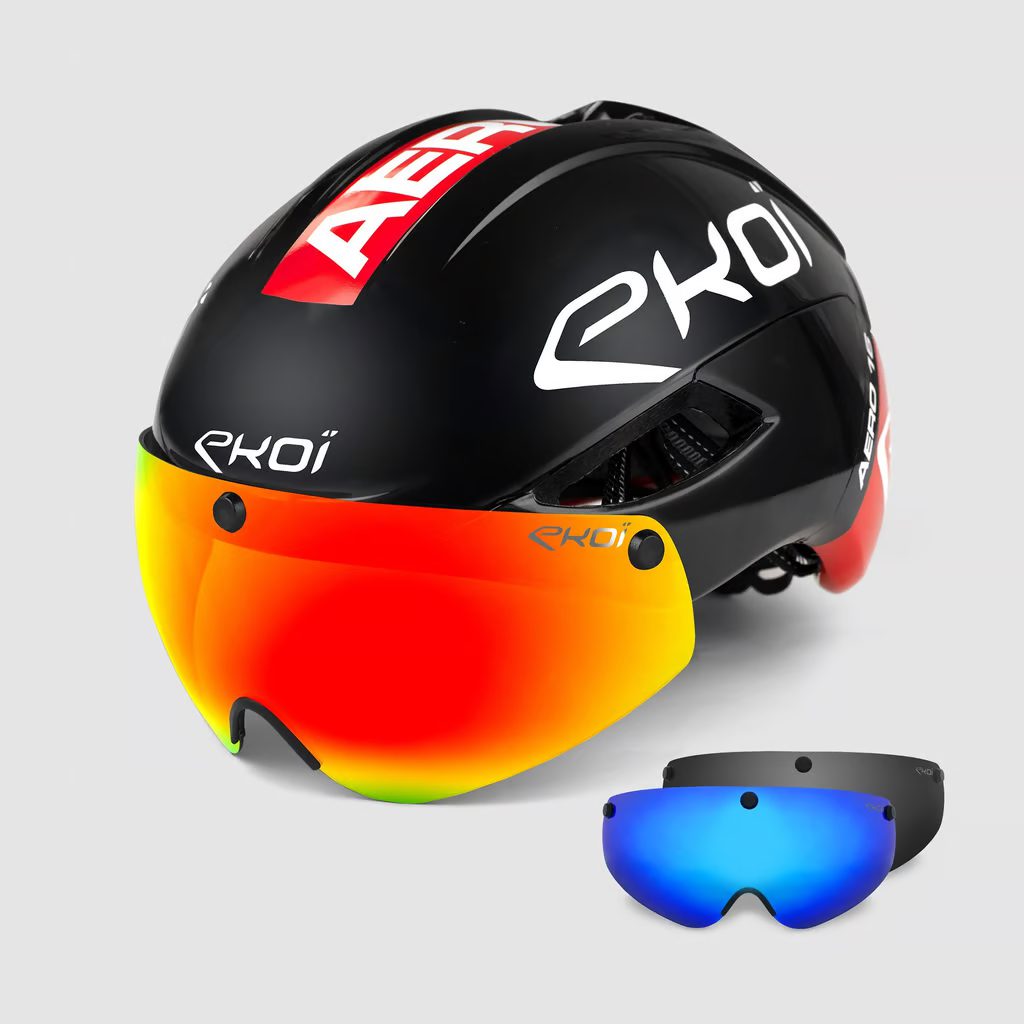Aero? Check. Ventilated? Check. Meet the Ekoi Ironman Aero 16
Designed for performance during an Ironman race, Ekoi offers an excellent compromise between aerodynamics and air flow
 Photo by:
Kevin Mackinnon
Photo by:
Kevin Mackinnon
Triathletes have long been dialled in to the performance advantage that comes from improved aerodynamics. Tri bars put us in a hugely advantageous position compared to sitting up on regular handlebars. Aero race wheels make a huge difference in terms of performance. Aero water bottles and optimal placement are critical components to saving a few seconds, too.
Part of that mix also includes your helmet. It’s a mandatory piece of equipment and is actually one of the most critical components to achieving the fastest bike splits. Traditionally, since the whole idea of an aerodynamic helmet is to help guide air around your head as efficiently as possible, aero helmets have featured smooth surfaces without many vents. That makes them fast, but it also makes them hot.
That’s not a huge deal if you’re doing a short time trial as a cyclist, but if you’re a triathlete doing a 180-km bike ride in, say, Hawaii, and you have to run a marathon after that effort, having your head roast for four to eight hours isn’t exactly ideal.
Which is why we’ve seen a steady development of aero road helmets over the last few years. These helmets provide decent aero performance with more ventilation, offering the best of both worlds. In the world of aero road helmets, there are some models that are more aero, and others that offer lots of ventilation. For those who are leaning more on the aero side, but want to hedge their bets and still have a helmet they could imagine wearing in some hot conditions, Ekoi’s Ironman Aero 16 is definitely worth a look.
Thanks to wind tunnel tests, Ekoi developed this helmet to shave off time on your next bike split, but managed to keep the weight down (265 g, including the visor, 230 g without) and also provided some decent ventilation thanks to the eight vents.

Real-life testing
To see whether the Aero 16 could really handle hot conditions, I used it exclusively during a recent training camp in Lanzarote. While I didn’t have to deal with temperatures much higher than the low 30s, I was pleasantly surprised at how well the venting works. There are two large vents at the front, along with a couple of large vents at the top of the helmet that provide some decent airflow. When I knew I was in for a long, hot day of climbing, I skipped the visor and went with sunglasses, which helped keep things a bit cooler, too. While the Aero 16 definitely felt a bit hotter than a much more ventilated road helmet might, I wouldn’t hesitate to use this during pretty much any race – the aero benefits would certainly outweigh having a warmer head on race day.
Will we see any of these crazy aero helmets in transition this year?
I especially liked the comfortable fit system – there’s a dial at the back so you can nail a comfortable fit, and the straps are easily adjusted. The Ekoi magnetic buckle is really easy and quick to fasten, too. The visor provides excellent vision, especially in the aero position. There are three different shades of “screens,” as Ekoi refers to them. The yellow mirrored lens looks by far the best, but is easily scratched, so be careful handling it.
A nice compromise
The end result is a helmet that straddles both worlds reasonably well – you’ve got an aero helmet that still provides enough ventilation to get you through virtually any race. I’m not sure I’d say that you want to do all your training in the Aero 16, but if you can afford a couple of helmets and are looking for an aero option for race day, this is well worth the look.
